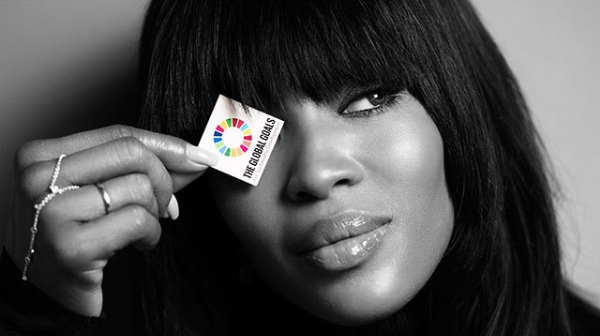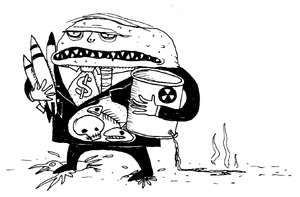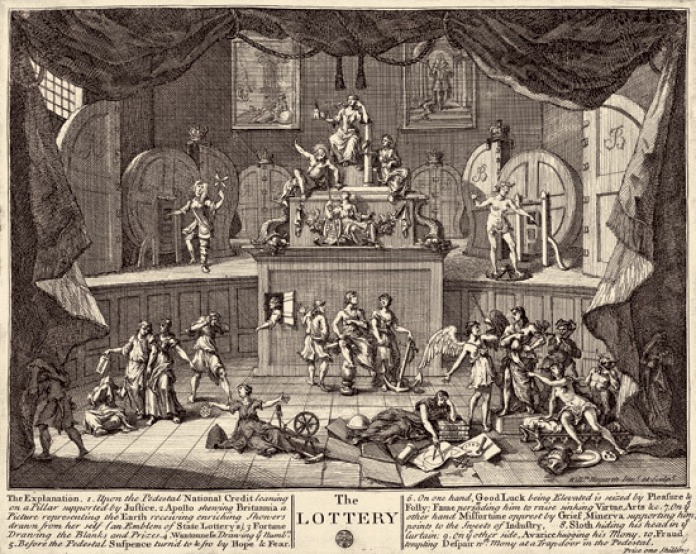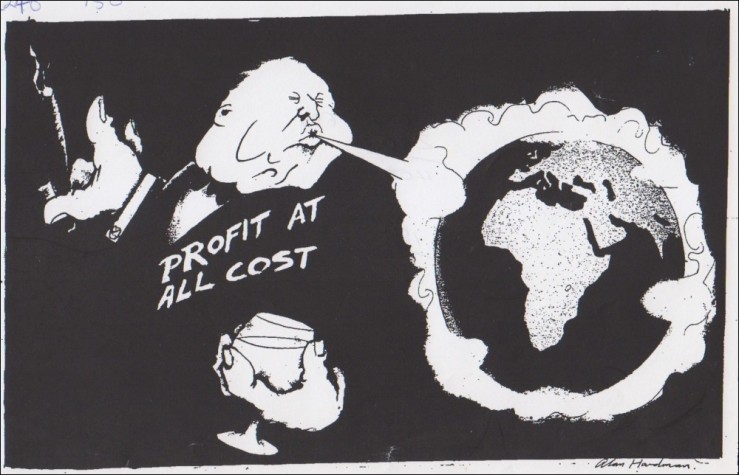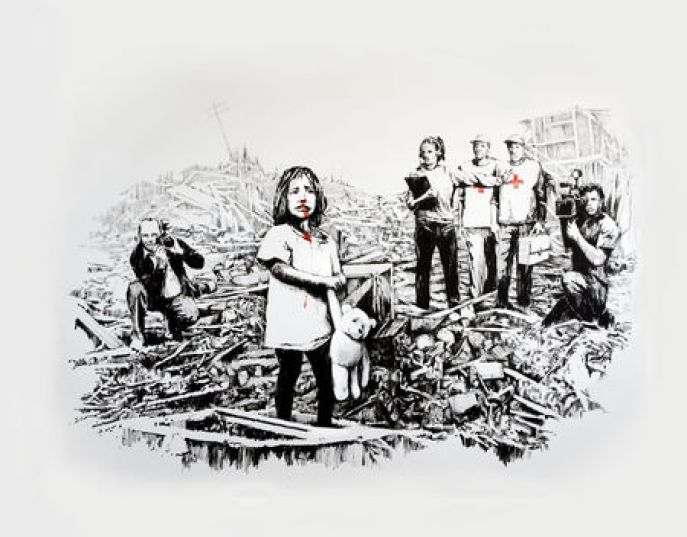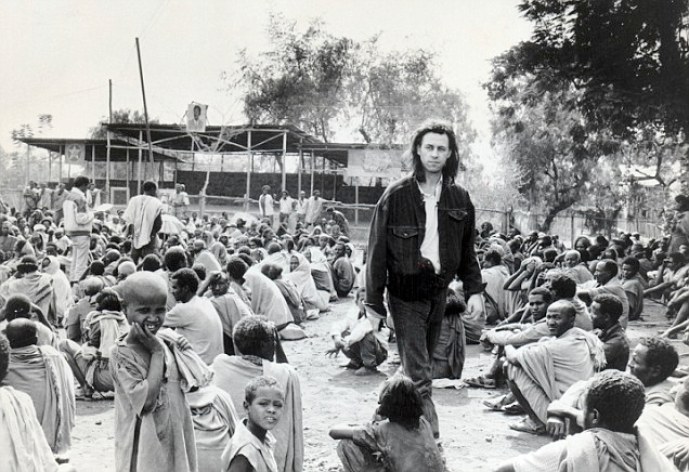Speaking Fees, Selfies, Sucking Up to Power: How BLM Lost its Mojo
April 17, 2018
By Jon Jetter
The Black Panther Party remains beloved in the African-American community 52 years after its founding — revered for its nutrition and health programs, fearless defense of the people, and self-sacrifice. The BLM leadership, on the other hand, poses for fashion magazine photo spreads.
Wearing Christian Siriano, co-founder of the Black Lives Matter movement Patrisse Cullors attends the 90th Annual Academy Awards at Hollywood & Highland Center on March 4, 2018 in Hollywood.
CINCINNATI, OHIO — In a stinging rebuke of Black Lives Matter (BLM), the organization’s local affiliate here last month announced that it was severing all ties to a movement it characterized as opportunistic, too invested in liberal, electoral politics and the Democratic party, and ultimately ineffective in fighting state-sanctioned violence against African-Americans.
Black Lives Matter Cincinnati (BLMC) explained its decision to change its name to Mass Action for Black Liberation in a tersely-worded letter, published March 30 on its website. With an organizational structure similar to the anarchist-influenced Occupy Movement, BLM and the Movement for Black Lives Matter network is a loose-knit — often unwieldy – confederation of chapters, affiliates, and spinoffs with broad autonomy and varying degrees of collaboration with the national leadership. Despite their initial reservations, activists in Cincinnati decided to adopt the BLM moniker early in 2015 out of a sense of urgency following a series of highly publicized police murders in 2014 — including those of Eric Garner on a Staten Island street, 12-year-old Tamir Rice at a Cleveland playground, and 18-year-old Michael Brown Jr. on a suburban St. Louis street.
The Cincinnati group wrote:
BLM did not create or build this new grassroots movement against police brutality and racism; they capitalized off a nameless groundswell of resistance sweeping the nation, branded it as their own, and profited from the deaths of Black men and women around the country without seriously engaging, as a national formation, in getting justice for fighting families. All the while raking in hundreds of thousands of dollars from high-end speaking engagements and donations from foundations that support the Black struggle (or want to co-opt it).
They have gained access to high profile associations, including invitations to the White House and celebrity events; have been on magazine covers; are on the way to profiting as authors and subjects of books; and have accepted numerous awards and accolades as so-called founders of the movement — while families struggle, unassisted, to keep their fights going. So many people on the ground have shared a similar experience: when the reporters leave and the bright lights are gone, so are they [BLM].”
Outgoing Planned Parenthood (premiere partner of the 2017 Women’s March campaign) president Cecile Richards attended the Oscars Sunday evening with Patrisse Cullors-Brignac, one of the co-founders of Black Lives Matter. Richards arrived at the Oscars with Cullors-Brignac and Bryan Stevenson, initiative director for Equal Justice, and the three posed on the red carpet for photos, reports CNN. [Source]
Cecile Richards with Hillary Clinton. June 10, 2016
A member of the Mass Action for Black Liberation steering committee, Brian Taylor, was even more blunt, characterizing BLM as a “liberal” organization offering solutions that are wholly insufficient to fulfill the ambitions of a radical and restive black working class that is most affected by state terror:
We feel that BLM has not been a champion in any real way in the fight against police brutality. And, by presenting themselves as the creator of something they did not initiate, they have benefitted from the [survivors’] suffering in ways that we feel are inappropriate. Their approach is very reformist, very liberal, and at the end of the day they believe in the institutional structures that are at the heart of our oppression. We see ourselves here as a revolutionary organization.”
Of a campaign to register African American voters at movie theaters showing the popular Black Panther movie based in the mythical African nation of Wakanda, Taylor, 43, told MintPress:
History is not made by the ballot box; it’s made in the streets. With all that’s going on in this country and you want to Wakanda the vote? What?”
Black Lives Matter Cincinnati joins Black Lives Matter New York, which announced in January that it was severing its ties to the Global BLM Network. And, while the letter announcing their departure was not as sharply-worded as the Ohio declaration, New York activists left no doubt that their motivation for withdrawing from BLM was virtually identical to that of their peers in Cincinnati.
The best way for us to move our Black liberation work forward is to be autonomous from the global network. We will take time to build a collective that can realize our power, be accountable to our community, and transformative in our politics. We see this as a continuation of the radical Black liberation and Black power struggle that has spanned centuries around the world.
We believe in the right to self-govern and our need to become ungovernable to institutions that do not serve our interest of freedom, autonomy and liberation. We view the struggle for Black liberation as a human rights struggle. Black liberation is necessary and imperative for global liberation and the liberation of all people.”
Representatives for the Global BLM Network did not respond to repeated requests for an interview.
Founded by three African-American women — Alicia Garza, Opal Tometi and Patrisse Khan-Cullors — BLM is widely-praised for challenging state-sanctioned violence against people of color, and expanding the national discussion about the country’s longstanding racial divide, much like the Occupy movement’s success in raising public consciousness about issues of wealth inequality.
Alicia Garza, from left, Patrisse Cullors and Opal Tometi, co-founders of the Black Lives Matter movement, arrive at the Glamour Women of the Year Awards at NeueHouse Hollywood, Nov. 14, 2016, in Los Angeles. (Photo: Jordan Strauss/Invision/AP)
But the Cincinnati activists’ critique of the organization is remarkably consistent with those leveled by progressives, generally, and the African-American left specifically. Almost since its inception four years ago, the BLM leadership has come under fire for its lack of a class analysis. This lack has been underscored by BLM’s close ties to multinational corporations such as Google, nonprofit donors like the Ford Foundation, and pro-market strategies that are inconsistent with a radical black polity that has been integral, historically, to the maturation of the modern state, from public education to the New Deal to open admissions at the City University of New York.
African-American writers, such as Black Agenda Report’s Managing Editor Bruce A. Dixon, have been critical of BLM’s collaboration with a black-owned California bank to roll out the official BLM debit card, charging low-income depositors exorbitant fees. One of BLM’s most visible activists, DeRay McKesson, is a vocal advocate for school privatization and charter schools, which often produce worse outcomes than standard public schools. And in a 2016 interview, the one-time chairperson of the Black Panthers, Elaine Brown, said that the BLM organization suffers from a “plantation mentality.”
Perhaps unfairly, BLM invites comparisons to the Black Panther Party, which remains beloved in the African-American community 52 years after its founding, revered for its nutrition and health programs, fearless defense of the people, and self-sacrifice. The BLM leadership, on the other hand, poses for fashion magazine photo spreads.
Said one African-American woman who has worked closely with BLM but asked to remain anonymous because she did not want to foreclose on the possibility of organizational change:
They don’t take on hazard. They showed up in St. Louis and took selfies. They credential themselves with the suffering of others. They don’t come out of that revolutionary nationalist tradition and [they] really represent queer cultural nationalism as much as anything. There’s something about BLM that has always felt a bit precious to me.”
The absence of grit, or a deep connection to poor and working-class communities, Taylor and others say, is exacerbated by a top-down organizational structure that is intended to give BLM satellites autonomy in their decision-making, but actually achieves the reverse. Without an automatic or democratic means to distribute money to its network partners, donations — and therefore decision-making — tend to remain in the hands of a select few.
As an example, the Cincinnati group noted that activists in the St. Louis area had already begun organizing to indict the white police officer who fatally shot Michael Brown Jr. as he surrendered. But BLM parachuted in, stole the thunder from the grassroots local movement, redirected local fundraising efforts and ultimately derailed the movement. Since prosecutors declined to indict in the Brown case, several local activists in Ferguson have been fatally shot and their bodies burned with high-grade accelerant, and yet BLM has neither called for an investigation nor has it devoted any resources to identifying their killers, Taylor said.
Similarly, Taylor’s cohort accused BLM of hijacking the local effort to get justice for Tamir Rice, which was expertly led by the boy’s mother, Samaria Rice.
First, the open phone conferences organized to plan the #YearWithoutTamir action were shut down. BLM national, through a local leader they assigned, set up a new conference call where no one could speak but the moderator. They alienated churches who planned on sending support from the South. They refused to declare a firm day for a mass action, despite repeated requests from BLMC and numerous other groups. This made it impossible for unions and other organizations to zero in on a key day to bus people in. That single action destroyed union, regional and national support.”
Donna Murch, a history professor at Rutgers University and the author of a book on the Black Panthers, told MintPress that it was unsurprising to see BLM affiliates begin to squabble over resources. Ironically, Huey Newton’s allocation of resources to the legal defense of the New York cadre that included Tupac Shakur’s mother, Afeni, was central to the Panthers dissolution.
But Taylor in Cincinnati balked at any such comparison. He said:
It’s foolish to even mention the Black Panthers and Black Lives Matter in the same breath.”
Top Photo | A man wears a hoodie which reads, “Black Lives Matter” as stands on the lawn of the Capitol building on Capitol Hill in Washington during a rally to mark the 20th anniversary of the Million Man March. (AP Photo/Evan Vucci)
[Jon Jeter is a published book author and two-time Pulitzer Prize finalist with more than 20 years of journalistic experience. He is a former Washington Post bureau chief and award-winning foreign correspondent on two continents, as well as a former radio and television producer for Chicago Public Media’s “This American Life.”]




